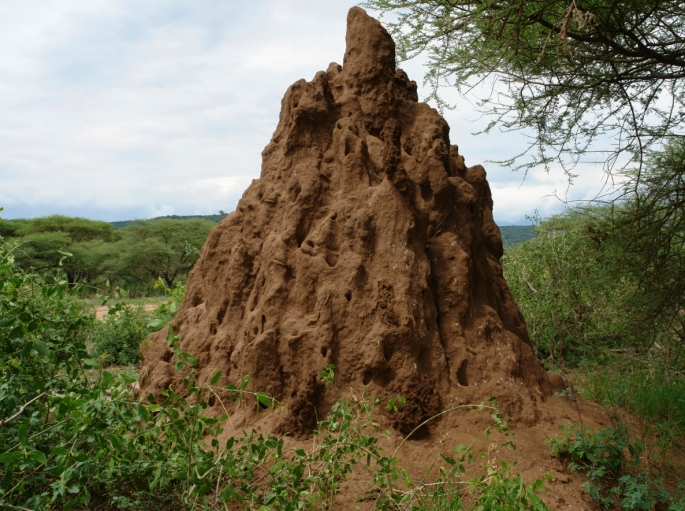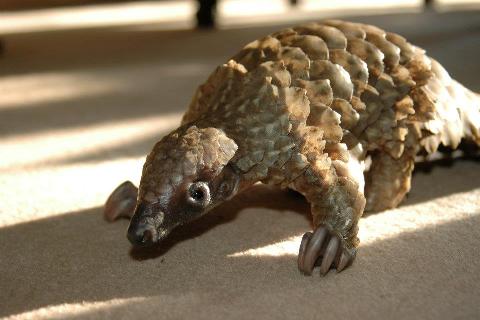Diet and Nutrition - What's for Dinner?
 The diet of pangolins is fairly simple and
straightforward. They are carnivorous animals, usually consuming a wide variety of
ant and termite species, but are also able to eat larvae and a few other insects. Although there are hundreds of species of termites,
ants and other insects that they can consume, pangolins are somewhat picky
when it comes to what they eat. Depending on where they are located
and how much prey is available to them, a single pangolin will usually only
consume one or two particular species of insects. It is unknown why
they stick with only a few species when many more are accessible.
The diet of pangolins is fairly simple and
straightforward. They are carnivorous animals, usually consuming a wide variety of
ant and termite species, but are also able to eat larvae and a few other insects. Although there are hundreds of species of termites,
ants and other insects that they can consume, pangolins are somewhat picky
when it comes to what they eat. Depending on where they are located
and how much prey is available to them, a single pangolin will usually only
consume one or two particular species of insects. It is unknown why
they stick with only a few species when many more are accessible.
Because pangolins have very small eyes, and therefore bad eyesight,
they rely greatly on their strong sense of smell as well as their hearing
to locate prey items. Once
their prey is located, the animals dig into a termite or ant mound (pictured
above) with their powerful claws and then use their long, flicking
tongue to pick up their prey. In fact, the sticky tongue, which extends back into a special cavity
their its
abdomen, is actually longer than the whole body of the animals. On a
typical day, pangolins can consume 140 to 200 grams of insects.
Since they have no teeth, pangolins consume their prey whole, using a unique stomach to
digest the food. The stomach of pangolins contains small rocks and
pebbles that they consume to aid in digestion. These stones, along with their strong
stomach walls that have points protruding from them, allow the animals to
crush and break down their food into a more digestible form. This form
of digestion is very similar the way gizzards function in birds such as
ducks,
chickens, and
turkeys. Interestingly, the ants and termites the pangolins consume
contain formic acid which actually helps the insects themselves.
In fact, the sticky tongue, which extends back into a special cavity
their its
abdomen, is actually longer than the whole body of the animals. On a
typical day, pangolins can consume 140 to 200 grams of insects.
Since they have no teeth, pangolins consume their prey whole, using a unique stomach to
digest the food. The stomach of pangolins contains small rocks and
pebbles that they consume to aid in digestion. These stones, along with their strong
stomach walls that have points protruding from them, allow the animals to
crush and break down their food into a more digestible form. This form
of digestion is very similar the way gizzards function in birds such as
ducks,
chickens, and
turkeys. Interestingly, the ants and termites the pangolins consume
contain formic acid which actually helps the insects themselves.
In order to distribute the nutrients they take in when consuming these ants and termites, pangolins use a closed circulatory system. Their heart pumps blood throughout their body to distribute nutrients that are absorbed by the digestive system to the rest of the body.
Click here to find out how the pangolin reproduces!
Back to Homepage
